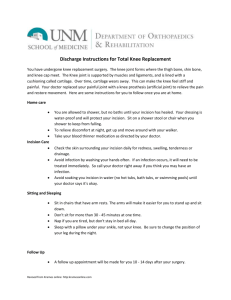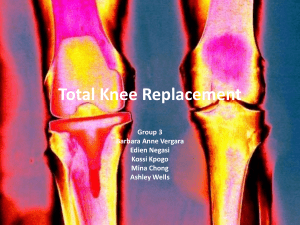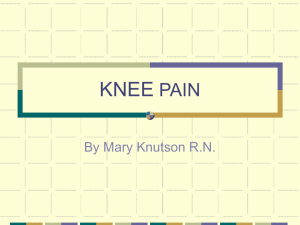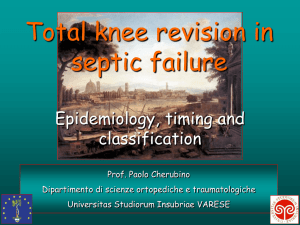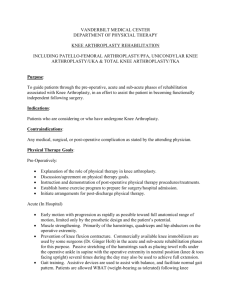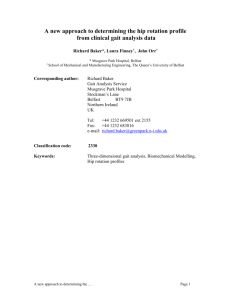Consultation
advertisement
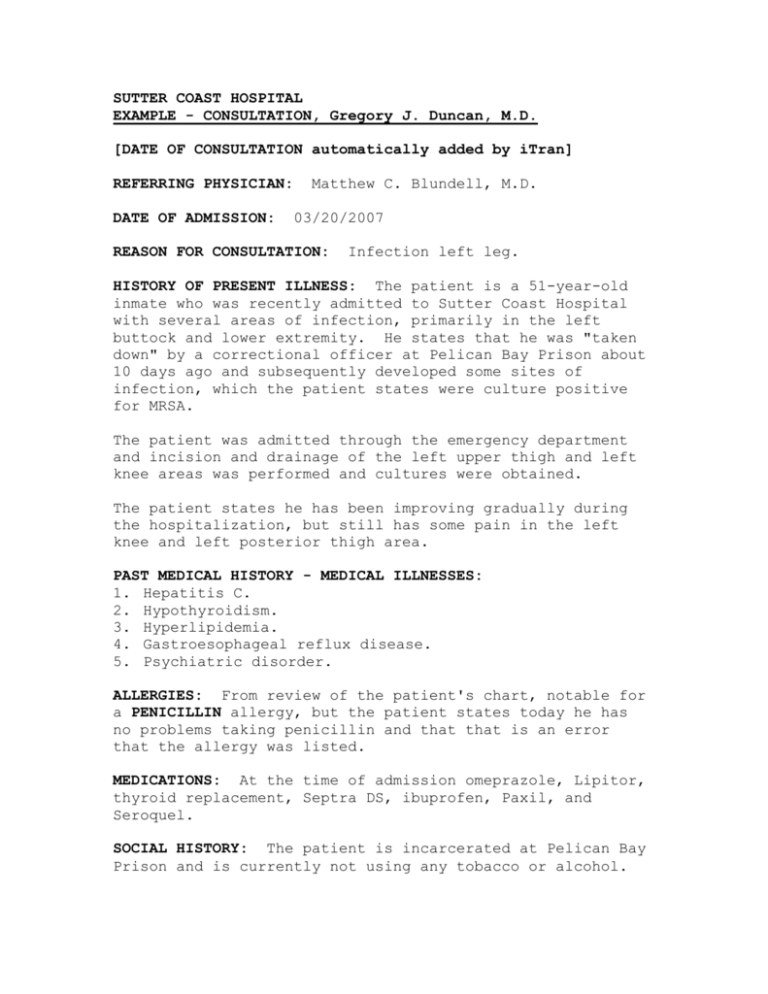
SUTTER COAST HOSPITAL EXAMPLE - CONSULTATION, Gregory J. Duncan, M.D. [DATE OF CONSULTATION automatically added by iTran] REFERRING PHYSICIAN: DATE OF ADMISSION: Matthew C. Blundell, M.D. 03/20/2007 REASON FOR CONSULTATION: Infection left leg. HISTORY OF PRESENT ILLNESS: The patient is a 51-year-old inmate who was recently admitted to Sutter Coast Hospital with several areas of infection, primarily in the left buttock and lower extremity. He states that he was "taken down" by a correctional officer at Pelican Bay Prison about 10 days ago and subsequently developed some sites of infection, which the patient states were culture positive for MRSA. The patient was admitted through the emergency department and incision and drainage of the left upper thigh and left knee areas was performed and cultures were obtained. The patient states he has been improving gradually during the hospitalization, but still has some pain in the left knee and left posterior thigh area. PAST MEDICAL HISTORY - MEDICAL ILLNESSES: 1. Hepatitis C. 2. Hypothyroidism. 3. Hyperlipidemia. 4. Gastroesophageal reflux disease. 5. Psychiatric disorder. ALLERGIES: From review of the patient's chart, notable for a PENICILLIN allergy, but the patient states today he has no problems taking penicillin and that that is an error that the allergy was listed. MEDICATIONS: At the time of admission omeprazole, Lipitor, thyroid replacement, Septra DS, ibuprofen, Paxil, and Seroquel. SOCIAL HISTORY: The patient is incarcerated at Pelican Bay Prison and is currently not using any tobacco or alcohol. PHYSICAL EXAMINATION: GENERAL: Patient is an alert male in no distress, answers questions appropriately, and appears comfortable. HEAD: Normocephalic, atraumatic. NECK: Rotation is pain free. CHEST: Clear. CARDIAC: Rate and rhythm regular. ABDOMEN: Soft, nontender, and nondistended with no rebound or guarding. EXTREMITIES: Several areas of infection, primarily the left posterior proximal thigh and left knee, where there is some redness and swelling with incisions in both areas notable for some serosanguineous drainage; also a small nodular lesion which may represent a very small abscess over the left elbow region. Several macular lesions on the patient's back and some on the right lower extremities which do not appear abscesses, but may represent some tiny foci of infection, possibly from disseminated sepsis. Motor and sensory status normal in the lower extremities. Pulses are 1+ at the foot and ankle. Asymmetry of swelling, 1+ in the right lower extremity and 2+ and left lower extremity distal to the knee. No irritability and no effusion in the left knee. The area of drainage and redness is distal to the knee joint and somewhat distal to the insertion of the extensor mechanism on the anterior aspect of the lower leg. DIAGNOSTIC STUDIES: X-ray of the left knee was negative by report for any evidence of osteomyelitis. Today's CBC notable for a white blood cell count of 14,000, hematocrit 33%, differential WBC notable for 83% neutrophils, 9% lymphocytes. CBC on admission notable for white blood cell count of 16,800. Glucose has been elevated between 138 and 146 over the last three draws. Albumin was notably low, 2.3 today and 2.7 yesterday. Alkaline phos elevated at 304 today and 286 on yesterday’s draw with mild elevation of total bilirubin. Blood cultures are negative at one day. Left lower leg and left upper thigh cultures show 4+ grampositive cocci. IMPRESSION: 1. Multiple abscesses. 2. Rule out septic arthritis left knee. 3. Hepatitis C. 4. Protein malnutrition. 5. Elevated liver function tests. RECOMMENDATION: The primary concern prompting consultation was that of possible septic arthritis in the knee. Clinically this does not appear to be the case, but I would recommend an aspiration to obtain synovial fluid for cultures and analysis if sufficient fluid is present. The patient elected to proceed and the left knee was aspirated, yielding only 2 cc of normal-appearing synovial fluid which was sent for culture and sensitivity. With respect to the area of swelling in the left lower extremity, the situation was discussed with Dr. Schommer. There may be further consolidation of the infection necessitating a longer incision and surgical drainage. Currently there is no know loculation or fluctuance on clinical exam but, often as the infection consolidates, additional abscess formation occurs and surgical debridement of the infected soft tissues is necessary. The patient is also undergoing a cardiac workup for valvular infection. I would recommend an ultrasound of the left lower extremity to rule out DVT. The patient is currently on vancomycin pending culture results to cover for the strong possibility of MRSA. The patient also has evidence of chronic malnutrition and likely has chronic anemia which increases his susceptibility to infection. From an orthopedic standpoint there is no current indication for drainage of the knee joint, but I will follow up with culture results as they become available. If there is a positive culture from the knee, then arthroscopic or open incision and drainage of the knee joint itself will be necessary. Dr. Schommer is following the soft tissue infections elsewhere in the extremities.

